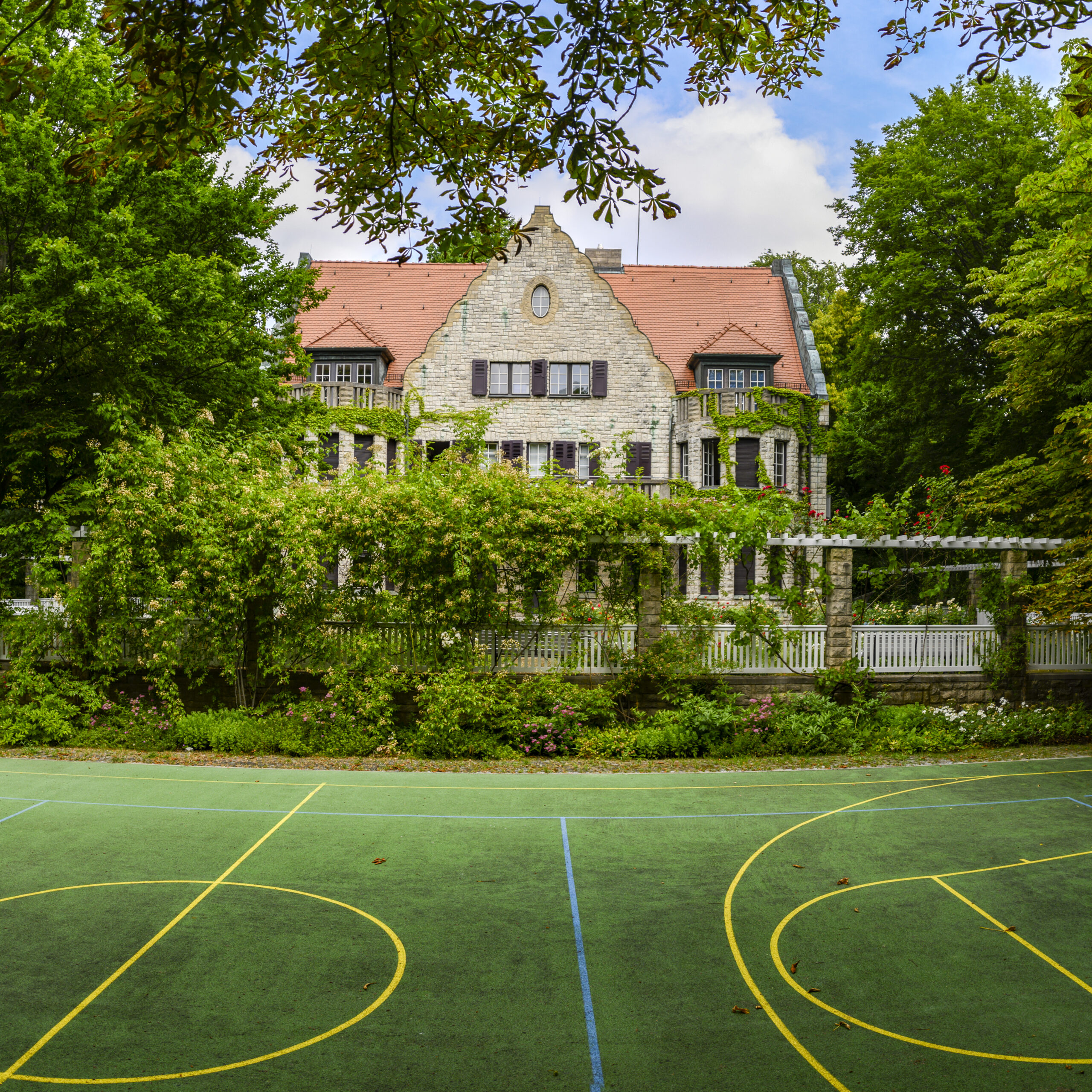Stanford’s H.G.Will Center in Berlin is not only a place where history is taught – it is itself an historical site: Haus Cramer, designed by architect Hermann Muthesius. It is located in the Dahlem district not far from the Free University, the Grunewald, and in the neighborhood of several embassies and ambassadors’ residencies.
Haus Cramer and its gardens are registered as an historical architectural site under the name of the family that commissioned the house in 1912. The Cramers emigrated shortly after the Nazis came to power in 1933 and soon settled in New York City. The Landhaus was largely destroyed by a gas explosion in the 1950s and stood in ruins for many years. Thanks to the efforts of architectural historian Julius Posener, the house was not razed in the mid-1970s as planned but was rebuilt by the Senate of West Berlin for use as Stanford’s German campus.
In 1988, 1996, and 2002, donations by the Stiftung Deutsche Klassenlotterie Berlin and The Stanford Club of Germany allowed for an historically accurate restoration and modernization of Haus Cramer under the direction of Berlin architect Burckhardt Fischer. In 1988, history came full circle when Charlotte Cramer of New York donated a 1928 painting by Leo von Koenig to Stanford in Berlin from the estate of her parents – a beautiful portrait of her from the time when she lived in the house.
The generosity and vision of Berlin alumnus Hans George Will and of Stanford President Prof. Gerhard Casper enabled the University to purchase Haus Cramer from the city of Berlin in the year 2000, the first property the University was to own outside the United States. In 2005, the WILL FOUNDATION provided funding to build a multi-purpose sports court in the portion of the garden that had once been a tennis courtand in more recent years to purchase artworks for the house and gardens.

